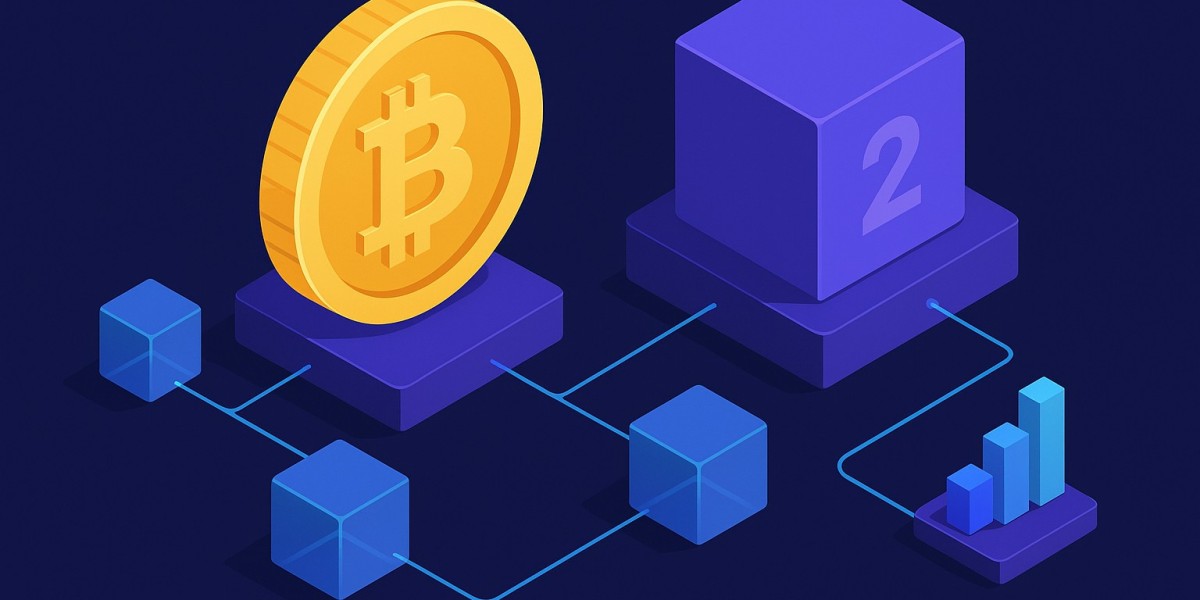Blockchain technology has revolutionized the way we handle digital transactions and decentralized applications, but scalability and performance have long posed significant challenges. As blockchain networks grow, congestion, high fees, and slower transaction processing become critical concerns. Layer 2 rollups have emerged as a promising solution, offering enhancements in both throughput and security while maintaining the decentralized nature of blockchain networks. By moving a portion of transaction processing off the main chain, layer 2 solutions allow networks to handle higher volumes of transactions without compromising security. In this blog, we will explore how layer 2 rollups improve blockchain performance and security and why integrating these solutions is becoming an essential strategy for blockchain developers.
Understanding Layer 2 Rollups
Layer 2 rollups serve as an essential mechanism to address the limitations of primary blockchain networks. By operating on top of an existing blockchain, they offer a way to scale transaction capacity without sacrificing security. Essentially, these rollups handle a significant portion of transactions off-chain, while still recording proof on the main chain. This strategy allows blockchains to remain decentralized and secure while accommodating higher throughput. Understanding the mechanics of layer 2 rollups is fundamental for developers and enterprises aiming to leverage layer 2 blockchain development solutions effectively.
Layer 2 rollups are secondary frameworks built on top of an existing blockchain, primarily designed to improve transaction speed and reduce costs. Instead of processing every transaction on the main chain, rollups batch multiple transactions together and submit them as a single compressed proof to the main chain. This method significantly reduces the computational load on the base layer while retaining the security and integrity of the network.
Scalable Transaction Handling: Layer 2 rollups allow blockchains to process thousands of transactions per second by aggregating them into batches, ensuring that networks can accommodate increased usage without congestion.
Cost Efficiency: By handling transactions off-chain, rollups minimize the gas fees associated with blockchain operations, making decentralized applications more accessible and practical.
Data Availability: Despite processing off-chain, rollups maintain critical data proofs on the main chain, ensuring that transactions remain verifiable and resistant to manipulation.
Types of Layer 2 Rollups
The effectiveness of layer 2 rollups largely depends on the specific type implemented. Developers can choose from different models that vary in how they process transactions and validate security. Each type offers distinct advantages and trade-offs, influencing speed, verification time, and trust assumptions. By understanding these variations, blockchain developers can make informed choices that align with the requirements of their applications. Selecting the right rollup type is critical for maximizing the benefits of layer 2 blockchain development solutions while maintaining a secure and scalable network.
Layer 2 rollups primarily come in two forms: optimistic rollups and zero-knowledge (ZK) rollups. Each offers unique benefits and security mechanisms tailored to different use cases.
Optimistic Rollups: These rollups assume transactions are valid by default and only run computations in case of disputes. This approach reduces verification overhead while maintaining strong security through challenge periods.
Zero-Knowledge Rollups: ZK rollups generate cryptographic proofs for each batch of transactions, which are instantly verifiable on the main chain. This method ensures higher security and immediate confirmation of validity.
Adaptive Integration: Depending on application needs, developers can choose the rollup type that aligns with their performance and security requirements, providing flexibility in layer 2 blockchain development solutions.
Enhancing Performance with Layer 2 Rollups
Performance improvements are one of the main motivations for implementing layer 2 rollups. As blockchain adoption increases, networks can become congested, leading to slower processing and higher fees. Layer 2 solutions mitigate these issues by offloading computations and aggregating transactions, ensuring faster confirmation times. This performance boost not only improves user experience but also supports the deployment of more complex decentralized applications that rely on timely and cost-effective execution. Improved performance is a key factor in the adoption of layer 2 blockchain development solutions for scalable network infrastructure.
The primary advantage of layer 2 rollups is improved performance. By taking transactions off the congested main chain, rollups enhance throughput and user experience.
Transaction Speed: By processing multiple transactions simultaneously off-chain, layer 2 rollups drastically reduce confirmation times compared to traditional on-chain transactions.
Network Efficiency: With fewer transactions occupying the main chain, the network can operate more efficiently, allowing critical functions such as smart contracts and decentralized applications to execute faster.
Scalable Ecosystem: High transaction throughput ensures that blockchain ecosystems can grow sustainably, supporting more users and complex applications without overwhelming the network.
Strengthening Security Measures
Security remains a top priority for blockchain networks, and layer 2 rollups contribute significantly to maintaining a secure ecosystem. By anchoring off-chain computations to the main chain, rollups ensure that data integrity is preserved even as transaction throughput increases. Both optimistic and zero-knowledge rollups provide mechanisms to prevent fraud, protect user assets, and maintain network trust. For blockchain developers, incorporating these security measures is essential when implementing layer 2 blockchain development solutions that aim to combine speed with robust protection.
While improving performance, layer 2 rollups also bolster security by maintaining strong links with the main chain.
Main Chain Anchoring: Rollups post transaction proofs to the base layer, ensuring that off-chain computations are verifiable and immutable.
Fraud Prevention: Optimistic rollups incorporate challenge periods, allowing any incorrect transactions to be disputed and corrected, minimizing potential fraud.
Cryptographic Integrity: ZK rollups leverage zero-knowledge proofs, offering cryptographic validation that ensures data integrity and prevents tampering without relying solely on trust in validators.
Role in Layer 2 Blockchain Development Solutions
Layer 2 rollups are central to the broader ecosystem of blockchain innovation. By enabling higher throughput, reduced costs, and strong security, they provide developers with the tools needed to build robust decentralized applications. These rollups are particularly critical for projects that anticipate large-scale user interaction or high-frequency transactions. Integrating layer 2 blockchain development solutions allows organizations to enhance application functionality while maintaining confidence in the network’s security and performance, enabling more advanced and scalable blockchain deployments.
Layer 2 rollups are central to the broader adoption of layer 2 blockchain development solutions. By addressing scalability, security, and cost challenges, they enable developers to build more sophisticated decentralized applications.
Enhanced dApp Performance: Developers can deploy applications that handle higher user activity without suffering delays or excessive transaction fees, broadening the appeal of decentralized solutions.
Interoperability: Layer 2 rollups can interact seamlessly with multiple blockchain networks, providing a bridge for assets and data across platforms, which is crucial for expanding ecosystem integration.
Sustainable Growth: The integration of layer 2 blockchain development solutions ensures networks can scale responsibly, balancing performance enhancements with strong security guarantees.
Future Outlook for Blockchain Networks
The future of blockchain technology is closely linked with the successful adoption of layer 2 rollups. As networks expand and the volume of transactions continues to rise, these solutions will be instrumental in ensuring efficient and secure operations. Developers and enterprises that leverage layer 2 blockchain development solutions will be able to deploy more advanced applications, support broader user bases, and maintain robust network integrity. Anticipated improvements in interoperability, rollup efficiency, and cryptographic validation will continue to shape the evolution of high-performance blockchain ecosystems.
The integration of layer 2 rollups signals a significant step toward more robust, scalable, and secure blockchain networks. As adoption increases, these solutions will become standard in optimizing transaction processing and supporting high-performance decentralized applications. Developers leveraging layer 2 blockchain development solutions are poised to unlock new possibilities, enabling networks to meet growing demand while ensuring data integrity and user confidence. Continued innovation in this space will likely result in more efficient rollup designs, improved interoperability, and wider adoption of layer 2 solutions across diverse blockchain platforms.
Contention
Layer 2 rollups are transforming blockchain networks by addressing critical scalability and security challenges. By processing transactions off-chain and anchoring proofs to the main chain, rollups significantly improve transaction speed, reduce fees, and maintain data integrity. Optimistic and zero-knowledge rollups offer unique approaches to secure transaction verification. Integrating these solutions enables developers to build high-performance decentralized applications while ensuring sustainable network growth. Layer 2 blockchain development solutions are key to unlocking the full potential of scalable, secure, and efficient blockchain ecosystems.








